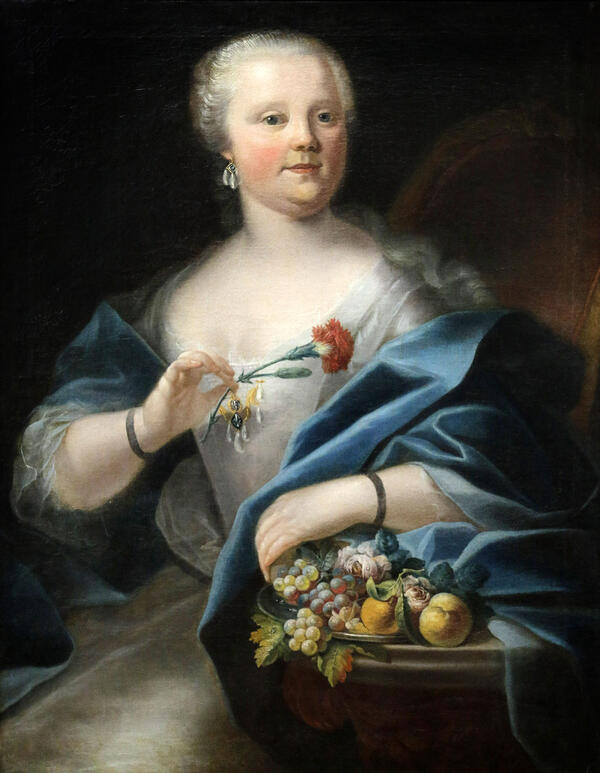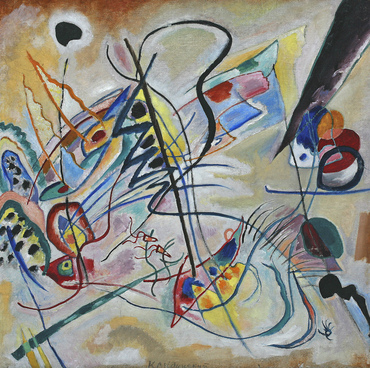The artist of the portrait is Christoph Friedrich Reinhold Lisiewski, one of the leading 18th-century portraitists in Germany, a native of Poland.
Christian Lisiewski was born into a family of hereditary artists. His father George and two sisters Anna Dorothea Terbusch and Anna Rosina de Gask, were also talented artists. Christian was known as a prodigy child for his extraordinary abilities in painting.
From 1752 to 1772, the artist served as court painter to Leopold I, Prince of Anhalt-Dessau. He spent a lot of time on various trips, especially often visiting Dresden and Leipzig. In 1773, together with his sister Anna Dorothea Terbusch, Christian Lisiewski opened his workshop in Berlin, in which he worked until 1779. Then until his death, he was a court painter at the court of Karl Leopold, Duke of Mecklenburg-Schwerin In 1783, the painter became an honorary member of the Prussian Academy of Arts in Berlin.
Christiana Lisiewski is a distinctive and recognizable portraitist of his time. In his work, he approached classicism and gradually diverged from the established stereotypes of Baroque composition. The master’s works are characterized by a thorough and thoughtful work on the image, virtuoso transferred texture, not idealization, but the exact reproduction of each character’s individuality.
Portraits were usually commissioned to painters for significant events. ‘Portrait of a Lady with a Carnation’ is most likely created for an engagement or wedding — the white front dress evidence this with a blue cape, powdered hair, and other attributes. The young woman is presented in a festive atmosphere, surrounded by objects symbolizing chastity, happy love, and well-being.
Pearls in earrings and brooches are a symbol of purity, health, family happiness. The dish with fruits and flowers also has a symbolic meaning: peach is a symbol of love and marriage, grapes are fertility, lemon is fidelity in love. The red carnation that the young bride gracefully holds in her hand is a multi-valued flower, and it becomes another reminder of love in this portrait.
Christian Lisiewski was born into a family of hereditary artists. His father George and two sisters Anna Dorothea Terbusch and Anna Rosina de Gask, were also talented artists. Christian was known as a prodigy child for his extraordinary abilities in painting.
From 1752 to 1772, the artist served as court painter to Leopold I, Prince of Anhalt-Dessau. He spent a lot of time on various trips, especially often visiting Dresden and Leipzig. In 1773, together with his sister Anna Dorothea Terbusch, Christian Lisiewski opened his workshop in Berlin, in which he worked until 1779. Then until his death, he was a court painter at the court of Karl Leopold, Duke of Mecklenburg-Schwerin In 1783, the painter became an honorary member of the Prussian Academy of Arts in Berlin.
Christiana Lisiewski is a distinctive and recognizable portraitist of his time. In his work, he approached classicism and gradually diverged from the established stereotypes of Baroque composition. The master’s works are characterized by a thorough and thoughtful work on the image, virtuoso transferred texture, not idealization, but the exact reproduction of each character’s individuality.
Portraits were usually commissioned to painters for significant events. ‘Portrait of a Lady with a Carnation’ is most likely created for an engagement or wedding — the white front dress evidence this with a blue cape, powdered hair, and other attributes. The young woman is presented in a festive atmosphere, surrounded by objects symbolizing chastity, happy love, and well-being.
Pearls in earrings and brooches are a symbol of purity, health, family happiness. The dish with fruits and flowers also has a symbolic meaning: peach is a symbol of love and marriage, grapes are fertility, lemon is fidelity in love. The red carnation that the young bride gracefully holds in her hand is a multi-valued flower, and it becomes another reminder of love in this portrait.



